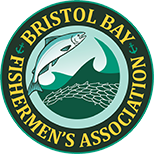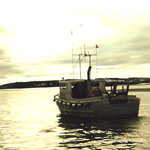| BBFA is a member-funded association committed to the fishermen and the salmon resource of the Bristol Bay region since 1966.
BBFA Member: “Thanks for all your good work on stopping the proposed Pebble Mine!” New BBFA Member “I have looked at your fishermen’s price sheet for a couple years. The price sheet is an invaluable service to the fleet. I have recommended to other fishermen that they join as well. Thank you for your work on behalf of the fishery.” |
News and Updates
2024 ADF&G Bristol Bay Salmon Fishing Outlook
Bristol Bay 2024 ADF&G Outlook
Bristol Bay Sees Strong Wild Sockeye Harvest in 2023 to Follow Up Record-Breaking Year in 2022
2022 Bristol Bay inshore run hits all-time record of 79 million sockeye
EPA’s 404(c) Proposed Determination for Pebble Mine Does Little to Protect Bristol Bay
EPA Announces New Steps in Process to Protect Bristol Bay Watershed Under Clean Water Act Authority
BBFA Comments on Pebble Mine EIS submitted to Army Corps of Engineers
BBFA Comments to Army Corps of Engineers
A Bit of History about the Bristol Bay Fishermen’s Association.
The Bristol Bay Fishermen’s Association (BBFA) was incorporated in 1966 in the State of Alaska as a non-profit corporation. The Association operates under the protection of the Fishermen’s Cooperative Act. The BBFA was formerly called AIFMA.
A Bit of History
BBFA (then called AIFMA) was incorporated seven years prior to the passing of the limited entry law that designated Area T. The board at the time saw no reason to limit the organization to only Bristol Bay, and had members who fished in different areas of Alaska. The word “independent” noted that the group represented those fishermen who owned their own boats and no longer were employees of the processing companies. The new limited entry law sealed the deal by giving fishermen exclusive rights to fish commercially, with a permit license, and fishermen said goodbye to being employees of the company. The new group of independent fishermen in AIFMA was able to continue to negotiate the price of fish and poundage limits legally under the law.
A half century later much has changed in our fishery, however, our basic economic structure is unchanged. The certain need for fishermen to be professionally represented in a number of areas is clear.
Obama Protects Alaska’s Bristol Bay from Oil and Gas Drilling
In a boon to commercial fishermen, conservationists and Native Alaskans, President Obama on Tuesday, December 16th withdrew the waters of Alaska’s Bristol Bay from oil and gas development, vowing to protect the world’s biggest sockeye salmon fishery. Calling the region “one of America’s greatest natural resources and a massive economic engine, not only for Alaska but for America,” Obama said he was taking it “off the bidder’s block” and would “make sure that it is preserved into the future.”
This is an issue that BBFA has been working on for a decade.
Obama Protects Bristol Bay
EPA’s Bristol Bay Watershed Assessment
EPA’s final assessment of the potential impacts of large-scale mining development on Bristol Bay fisheries and wildlife, and on Alaska Native cultures of the region.
Assessment
Bristol Bay: World’s Largest Sockeye Salmon Run
Bristol Bay is home to the largest sockeye salmon run in the world. The 2023 Bristol Bay sockeye salmon harvest was 38 million. Wild sockeye salmon from Bristol Bay is enjoyed by consumers worldwide. Its firm, red flesh and delicate flavor make it one of the finest fresh, frozen and canned salmon on the market today.
Bristol Bay is located in the Southeast corner of the Bering Sea in Alaska. Bristol Bay sockeye salmon begin their lives in the pristine tributaries and lakes of the region. Here the fingerling salmon spend the first year of their five-year life cycle before migrating out to sea. The sockeye salmon spend four years in the cold and clean waters of the Bering Sea and North Pacific. The sockeye salmon thrive on a plankton diet, and attain one of the highest levels of health-promoting omega-3 fatty acids found in any seafood. Completing their life cycle, the sockeye salmon migrate back to the rivers of their origin.






